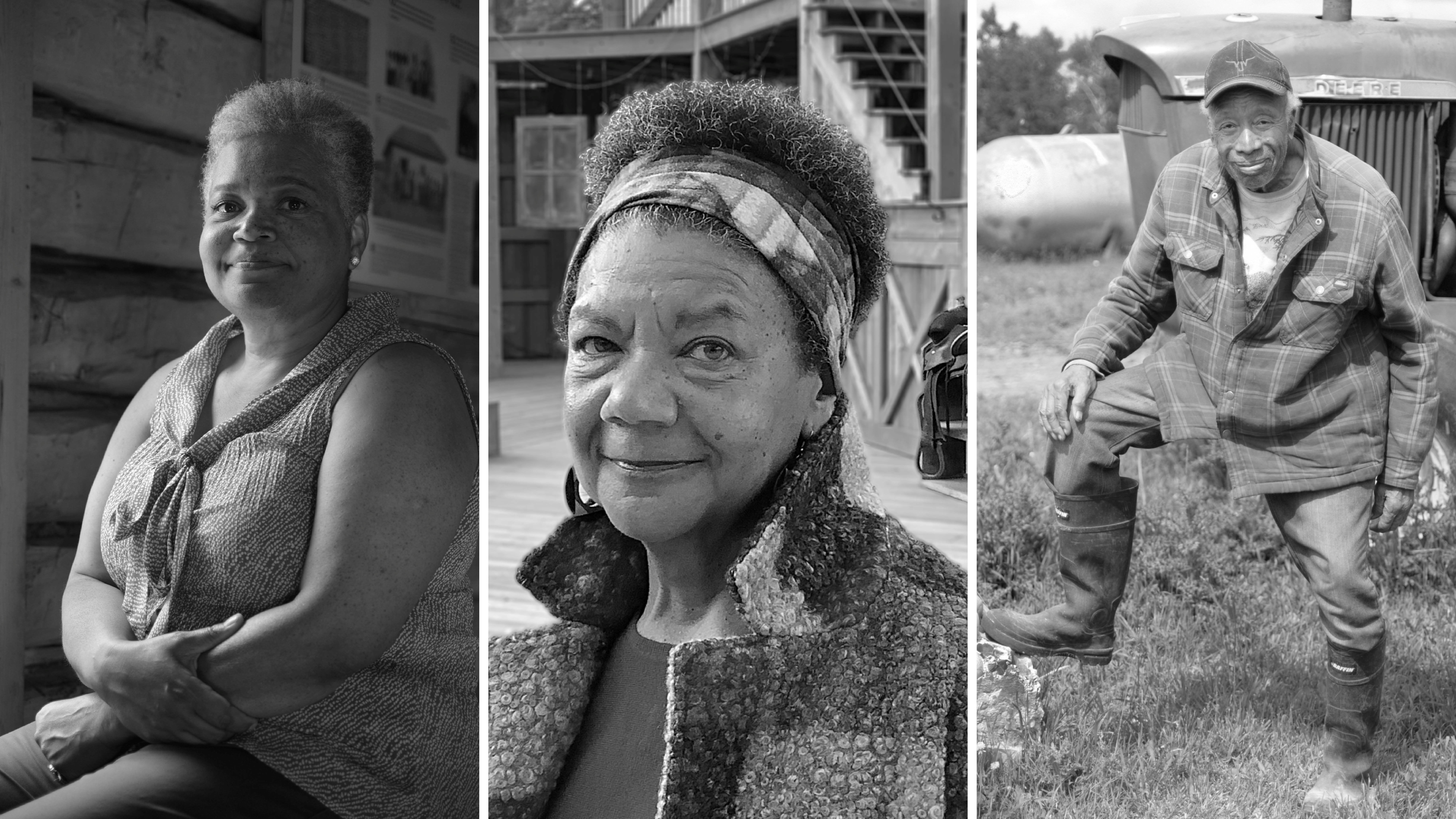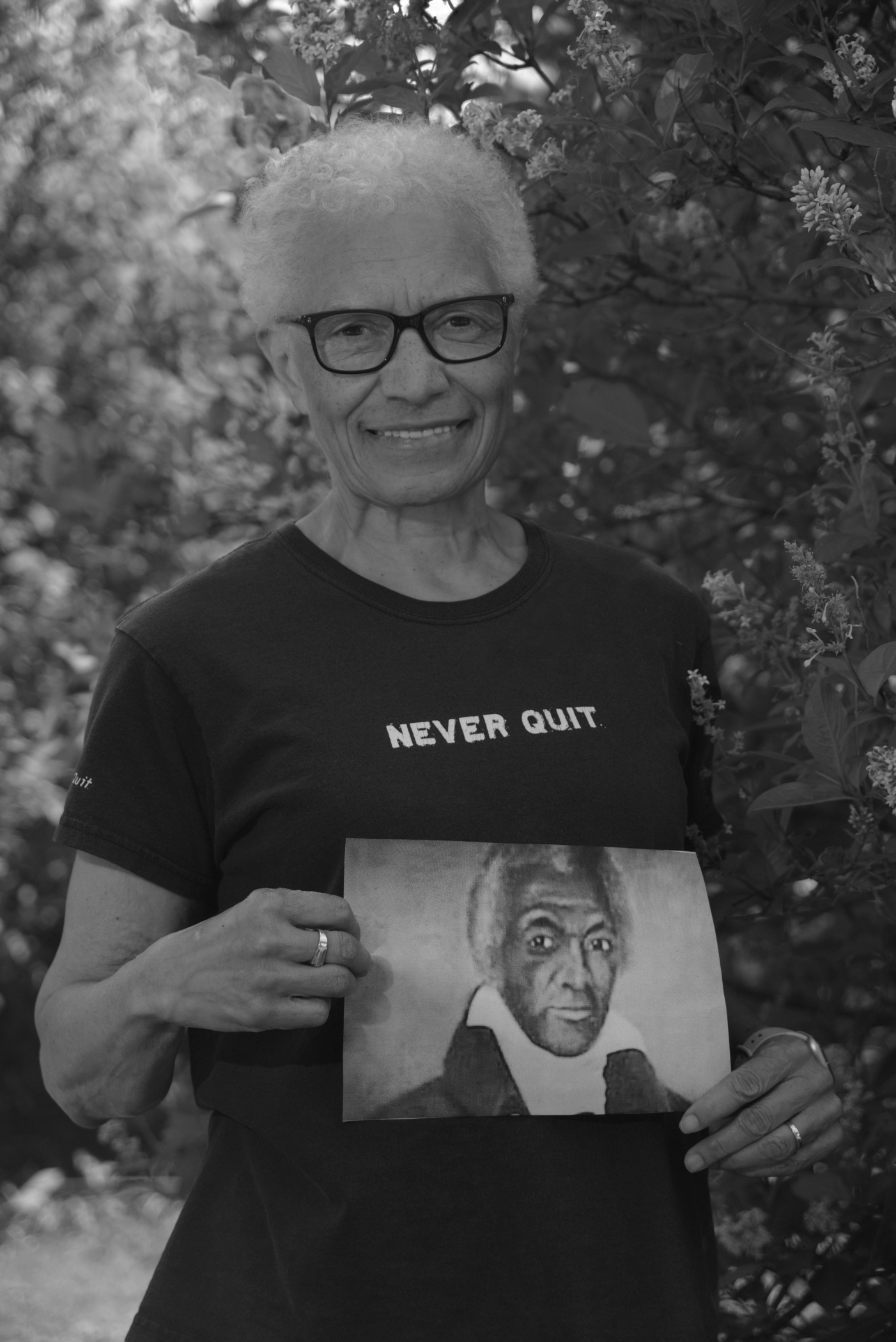
FOR IMMEDIATE RELEASE
Contact: Communications team | 405 951 0000 | communications@okcontemp.org
Media kit: bit.ly/DescendantsBlack1000
Black perseverance, strength and resilience from historic Black Towns to Canada
Descendants of the Black 1000: Flight from Oklahoma Black Towns to Canada, opening Nov. 9 in the Mary LeFlore Clements Oklahoma Gallery, explores the history of more than 1,000 Black Oklahomans who migrated to the Canadian prairies in the early 20th century. Through photographs, interviews and archival materials, Descendants of the Black 1000 emphasizes a fuller picture of how Black history in Oklahoma had an international reach.
“Donna Paris and David Ofori Zapparoli create works that crystallize and celebrate the ongoing legacy of Black resilience throughout this continent,” says Associate Curator Pablo Barrera. “By focusing on the stories and faces of the Oklahoma descendants of the Great Migration to Canada, the artists bridge the gaps in our collective memory as a state, offering a lens through which we may more fully connect with our shared Great Plains history.”
A selection of 12 black-and-white portraits with corresponding oral history recordings from an ongoing series by the artists reveals the deep connections between Black Canadians and Oklahoma, tracing ancestral roots back to the state.

“This exhibition is an important part of a larger project called Black Threads of the Canadian Tapestry coined by our friend and fellow historian Elise Harding Davis,” write artist Paris and photographer Zapparoli. “We want to open people’s eyes to the fact that there are a myriad of ways that Black people came to Canada beyond the story of the Underground Railroad and that their stories continued after they crossed the border.”
Descendants of the Black 1000 is organized by Guest Curator Gay Pasley, making her curatorial debut, with the support of Guest Curatorial Research Associate Joy D’Ann Tucker. With their guidance, the exhibition provides a rich yet heavy historical narrative, placing oppression, freedom and survival at the forefront.
“Just as the story of the 1921 Tulsa Race Massacre in Greenwood was squelched for decades, this mass migration of Black Americans from Oklahoma due to apartheid at statehood is not widely known,” says Pasley. “It is important so that we understand who we are throughout the diaspora, and because it is Oklahoma history, and thus American history, this story must be told accurately.”
Through the captivating photographs and poignant voices of the descendants, viewers will learn of the events that led those seeking freedom to leave Oklahoma and find refuge in Canada.
“Oklahoma has a complex history, especially regarding Black Americans,” says Pasley. “Pre-statehood, Blacks and Indigenous Americans were regarded equally in the territory, with the ability to own land, hold elected positions, and have the right to vote. In 1907, Oklahoma declared statehood and passed Senate Bill 1 — the state’s first law was Jim Crow. Subsequently, there was an increase in lynching in Oklahoma. In response, between 1908 and 1911, it is estimated that thousands of Black Americans from Oklahoma migrated to Canada, coined pejoratively as The Black 1000.”
Timely in its existence, everlasting in its presence, the exhibition aims to reveal this important story, one that Senior Director of Curatorial Affairs Carina Evangelista cites as simultaneously charting migration and capturing the human spirit that drives individuals and communities into movement away from persecution, toward survival, toward freedom. Evangelista adds, “The will to traverse toward unknown regions, toward safety and freedom — and what it takes to clear and cultivate new lands, homes and lives — is drawn from a wellspring of fortitude and hope passed down through generations.” Their story continues in this exhibition.
“We want Oklahomans to understand the sense of community these Black people built once they were in Canada,” write Paris and Zapparoli. “Though their journeys were not without hardship, they not only survived but thrived in their new homeland, never forgetting where they came from.”
An opening reception will be held Nov. 9 from 6-8 p.m. with light bites and a cash bar. Paris and Zapparoli will join Pasley for an artist talk at 6:30 p.m., during which the artists will discuss the exhibition, the recovered stories, their larger project and the longstanding Black presence and movement within Oklahoma. Free tickets available here.
Descendants of the Black 1000: Flight from Oklahoma Black Towns to Canada will be on view through April 1, 2024.
A media kit featuring this press release, artist photos and select works can be found at: bit.ly/DescendantsBlack1000. Interviews with the artists and Oklahoma Contemporary staff can be organized through the Communications team (communications@okcontemp.org). Past press releases and information are archived at oklahomacontemporary.org/media.
About the artists
Donna Paris (b. 1955, Nova Scotia, Canada) is a multi-generational African Canadian based in Toronto. She has produced a series of interviews chronicling the various journeys taken by African Canadians and their ancestors to arrive north. Paris’s work centers the importance of collective history—who came before and at what cost—toward enabling us to fully access our present selves and move forward together.
David Ofori Zapparoli (b. 1957, Toronto, Canada) is the son of a German mother, a Ghanaian father and an Italian stepfather. His lens-based art documents and reveals the lives of the marginalized within society, with a focus on the Black experience in the North American milieu. Zapparoli collaborates with artist Donna Paris by producing the photographic portraits of all the interviewees. His black-and-white photographs challenge the viewer’s ability to pinpoint the place and time of each subject, opening the possibility of connecting to other locales and histories.
About the curator and research associate
Gay Pasley is a social justice nurse, community leader, writer and photographer, whose work has been featured in Abstract, Loud Zoo, and Maintenant: A Journal of Dada Writing and Art. She is also a regular contributor to Art Mama Moves. A graduate of the Oklahoma City Red Earth MFA Program, she has given lectures at organizations such as the International Association of Forensic Nurses, John Hope Franklin Center for Reconciliation, Ralph Ellison Foundation, Scissortail Writing Festival and Society for Photographic Education. Pasley is the 2023 winner of the Everett Southwest Literary Award and has been published in Amistad, elsewhere, Flatbush Review, Hard Crackers Press, Morkan’s Horse, Minola Review, Obsidian Literature & Arts in the African Diaspora, Snapdragon: A Journal of Art & Healing, Thread, and Transition, among others. As a Black female immigrant, Pasley speaks to her sense of displacement and desire to magnify her witness in her artistic practice.
Joy D’Ann Tucker grew up in Clovis, N.M., where her multicultural and art-infused upbringing influenced her love for the arts. A graduate of the University of Central Oklahoma, she majored in history and museum studies, and served two internships at the Smithsonian's National Museum of American History as a junior curator in Culture and Community Life and in Museum Management and Installation. At Oklahoma City Museum of Art, Tucker was an intern in Marketing & Communications. She served as the 2021 ArtTable Fellow at Oklahoma Contemporary, contributing an essay to the exhibition brochure for Rope/Fire/Water. She subsequently received a one-year grant at the Oklahoma History Center, where she digitized the African American collection archives from 1910 to 1980 as project coordinator. She aspires to contribute to the incorporation of West African and Afro-diasporic arts and culture in local and national museum institutions.
About Oklahoma Contemporary
At the new, state-of-the-art Oklahoma Contemporary, visitors explore art and creativity through exhibitions, performances and a wide variety of educational programs. At its core, the multidisciplinary contemporary arts organization is an inclusive space. Exhibitions and most programs are free. You are always welcome here.
In addition to the 8,000 square feet of galleries for visual art, Oklahoma Contemporary’s new downtown home includes a flexible theater, a dance studio and nine classrooms for Camp Contemporary and Studio School. The 4.6-acre grounds also include The Studios, a renovated warehouse that houses ceramics, fiber, painting, printmaking and sculpture classes. Campbell Art Park, our Sculpture Garden and North Lawn lend outdoor space for exhibitions, programs and performances.
After providing contemporary art experiences of all kinds for 30 years at the State Fairgrounds, these new, centrally located facilities dramatically increase Oklahoma Contemporary’s capacity to meet growing demand for arts and culture across our city, state and region.
Oklahoma Contemporary is a regional 501(c) (3) nonprofit organization founded in 1989 by businessman and philanthropist Christian Keesee and Kirkpatrick Foundation Director Marilyn Myers.
Images:
David Ofori Zapparoli, Charlotte Williams (née Mayes), Cheryl Foggo, and Vant Hayes, 2022. From the series Black Threads of the Canadian Tapestry, 2019-present. Inkjet print on velvet rag paper. © David Ofori Zapparoli.
David Ofori Zapparoli, Carol LaFayette-Boyd, 2022. From the series Black Threads of the Canadian Tapestry, 2019-present. Inkjet print on velvet rag paper © David Ofori Zapparoli. Images courtesy of the artist.









